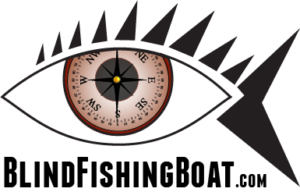Toronto Boat Show Jan 18, 2008
I recently headed down to spend a day at one of Canada’s largest boat shows, the Toronto boat Show. I was fortunate to have a brother who lives near Toronto and who volunteered to go to the Show with me. I also had Maestro with me, my 100lbs Burnese Mountain dog guide dog and a pocket full of print and braille business cards to hand out complements of T-Base Communications (www.tbase.com). Having my brother meant I was spared from asking each exhibiter what they were exhibiting, as well as what the neighbouring exhibits were. A method Maestro and I have used in the past, but one that is somewhat time consuming as it means I always end up having to politely listen to sales pitches for things which I have little interest.
My goal was two-fold. One, to make contacts with technologists representing marine electronics manufacturers, and two, to put some faces to names, or in my case the impressions of peoples hands in mine, with respect to emails and phone calls that have been taking place over the past several months concerning a new major sponsor of the Blind Fishing boat. I was successful on both counts.
On the electronics side, it was great to hear that a number of the larger marine electronics manufacturers are fully embracing the NMEA 2000 standard (www.nmea.org). This standard was agreed to by these manufacturers to allow their specific electronic devices to communicate with each other using a common computer code. The benefits to the consumer is that you will be able to put together your own package of electronics for your boat and know that they will work together. For example, a DSC VHF radio will be able to receive GPS coordinates from your antenna to transmit to your buddies to show up on their chart plotter displays, or in a worst case scenario, so others can come to your rescue if you send out an emergency Mayday call. Other benefits include engine information being accessible through displays like fish finders, as well as information such as fuel levels, water temperatures in live wells, etc. In the case of the Blind Fishing Boat, such a common language means my researchers at Compusult (www.compusult.net) in Newfoundland will be able to create an NMEA talk-box that will be able to speak this information aloud.
I’m presently working with the older standard, NMEA 0183, and don’t plan on abandoning my efforts in this area for quite some time. However, it would seem that even though NMEA 2000 is now eight years old, manufacturers are embracing the standard like never before. Already some fishing boat manufacturers are including the necessary trunk cable in their boats making it a cinch for consumers to install their electronic components themselves using the “plug-and-play” T’s, cables and plugs that allow the placement of electronics and sensors throughout the boat. In many cases, the trunk cable also provides the needed power to the device eliminating the need to run additional wiring.
I’m not going to get into the details now about the planned electronics I intend to introduce on the new power catamaran research vessel, but it’s nice to know that access to many of these new technologies is only a step away. Who knows, maybe someday some of these mainstream manufacturers will include speech as an optional interface in all their display units. Just like GPS systems in cars talk, why shouldn’t marine electronics? Of course, determining what needs to be spoken and when is the usability question that maybe I’ll be able to contribute something towards answering.
As far as the new sponsor goes, stay tuned… For now I’ll only say that I’m very pleased with the reception I’ve received from all the representatives I’ve met to date – never mind the high quality of their products.
Lawrence

Comments are closed.